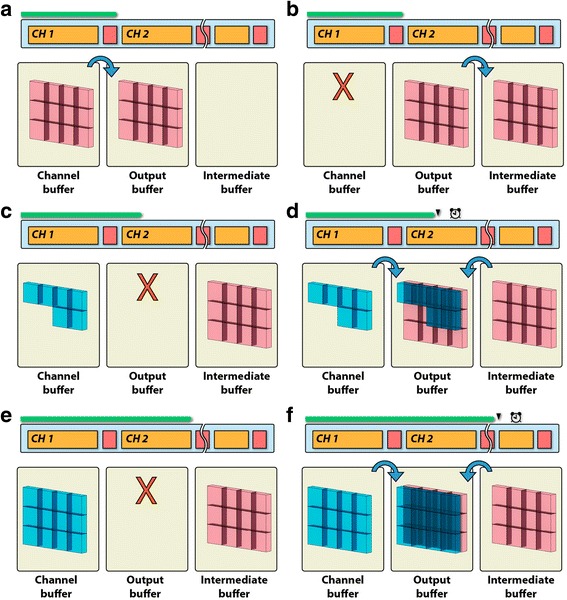Fig. 3.

The triple-buffer rendering scheme ensures that different compositing operations are free from interference. In this example, two channels are rendered using DVR, and then intermixed in the composite mode. The panels are the steps for processing the channels. a Channel 1 (red) finishes rendering to the channel buffer. Its result is copied to the output buffer. b The channel buffer is cleared; the content of the output buffer is copied to the intermediate buffer. c A portion of the bricks of Channel 2 (blue) is rendered; the output buffer is cleared. d The results in the channel and intermediate buffers are composited together to the output buffer, which is then shown to users. Render loop 1 finishes. e Rendering of Channel 2 continues and finishes. The output buffer is cleared. f The results in the channel and intermediate buffers are composited together to the output buffer. This process is repeated when more than two channels are present
